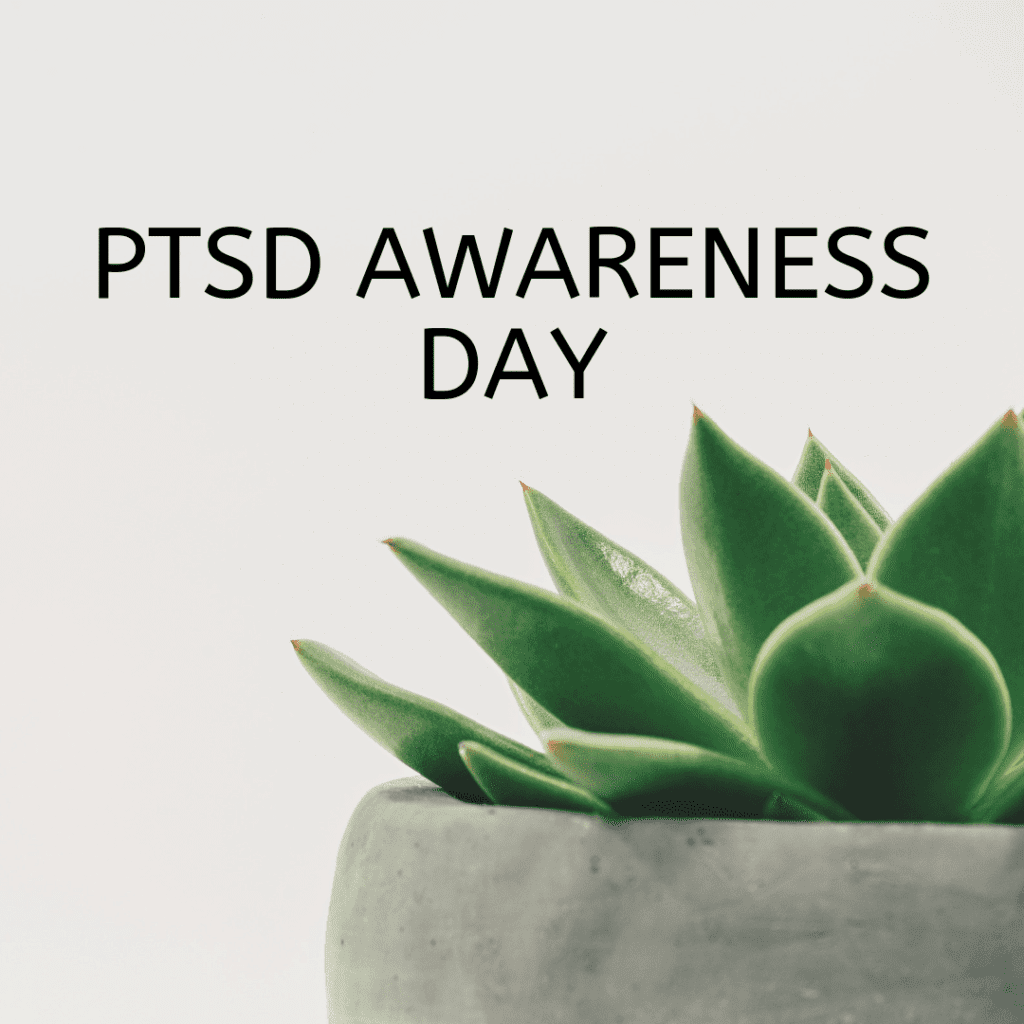
PTSD Awareness Day
The Disorder
PTSD is very common, with over 3 million cases in the United States each year. Since PTSD is common, PTSD awareness can drastically improve the stigma surrounding the diagnosis. This condition is due to being a witness to a terrifying event. Witnessing or experiencing a traumatic event brings it on. This includes scenarios outside of military combat and situations such as physical or sexual assault, a car accident, an animal attack, a severe injury, armed robbery, and more. Symptoms include flashbacks, nightmares, and severe anxiety and panic attacks. Any of these symptoms can cause significant difficulties in going about daily life. They are most debilitating in social or work situations. Personal relationships may also suffer as a result.
Symptoms
There are four types of PTSD symptoms. The four are intrusive memories, avoidance, negative changes in thinking and mood, and changes in physical and emotional reaction.
- Intrusive memories, often known as flashbacks. These are reoccurring and unwanted distressing memories of traumatic event. This could include nightmares or stress when reminded of something relating to the memory.
- Avoidance of places, activities or people which remind you of the trauma.
- Negative change in thinking and mood, such as hopelessness, numbness, detachment, difficulty maintaining close relationships and memory problems.
- Changes in physical and emotional reactions, including feeling easily scared, self-destructive behavior, always being on guard, and trouble with sleep and concentration.
All demographics are at risk to develop PTSD. Specific factors can make an individual predisposed to PTSD after trauma, such as anxiety, depression, substance abuse, lack of a strong support system and a familial history of mental illness are all risk factors. PTSD can also manifest anxiety, depression, substance abuse, isolation, self-harm, and even suicide if the individual does not receive treatment.
The History of PTSD
PTSD is not new. It has been around for a long time. The history of the outlook on and treatment of this condition has deep military roots. Thousands of veterans were simply put in insane asylums during WWI. There were advances made in treatment options after World War I, largely due to the overwhelming number of veterans who returned traumatized. Doctors observed and developed several diagnoses to classify intense feeling of fear, hopelessness and psychiatric impairment.
During that time in our history, the condition was euphemistically referred to as “shell shock.” The name was derived from the belief that the shocks of artillery explosions were damaging nerves. Combat-related trauma being at fault was not even under consideration. When World War II came, veterans returning home with trauma got a “combat exhaustion” or “combat fatigue” diagnosis. It wasn’t until the Vietnam War that the psychiatric community began a more comprehensive discussion of PTSD. Finally, in 1980 the third edition of Diagnostic and Statistical Manual of Mental Disorders was published with PTSD as a new diagnosis.
Managing PTSD
Make note that professional help may be neccesary if you or a loved one are experiencing PTSD. PTSD Awareness is essential since mental health requires support from the community. This is especially true in cases where PTSD has produced additional psychiatric issues. These problems can include anxiety, depression, substance abuse, self-harm, or suicidal thoughts and attempts. There are a number of ways to manage PTSD without medications in some cases.
1.) Mindfulness meditation
https://www.hoytorg.com/five-benefits-meditation-workplace-meditating-office/Mindfulness meditation is proven to reduce depression and boost self-perception. Multiple methods of mindfulness mediation are applicable, such as mindfulness-based stress reduction, cognitive therapy, exposure therapy, meditation-relaxation, and mantrum repetition practice. Each option varies and applies on a case-by-case basis.
2.) Exercise
Many struggling with PTSD report that engaging in enjoyable physical activities increases performance in every-day situations. Exercise is also proven to reduce stress levels and cope with symptoms.
3.) Art
This form of therapy is gaining popularity in recent years. This is for good reason. People who have experience with trauma receive instruction to to externalize their emotions and learn to cope through a variety of art mediums, such as painting or sculpture, led by a specialist. Art is a way for people to process.
4.) Pets
Adopting a pet can help people cope with trauma is another popular method. These pets are often have training to specifically recognize and prevent triggering PTSD symptoms. Spending as little as one week with these dogs can improve PTSD symptoms by 82%. That is a big improvement. Many veterans choose a pet for this reason.
5.) Journalling
Expressive writing is shown to improve both the physical and psychological health for people with a number of physical and mental health conditions. Psychologically, writing helps people cope with PTSD symptoms, such as anxiety and anger. The effects are seen physically in lower body tension and focus restoration. Physical effects can be very hard to manage. These effects are frustrating.
Final Tips & Advice
Looking into treatment methods when an individual is experiencing PTSD is essential. It is important. A psychiatric professional will also inform you of your options. Often, those suffering are hesitant to find professional help. Never suggest professional help in an argument or a flashback episode. A great beginner’s resource is the website ptsdalliance.com which lists psychiatric professionals and support groups nearby.









